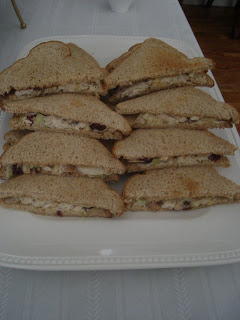Yesterday was my first day of volunteer work. It started with a brief orientation with the center director. She told me that the center provides assistance for people who live in the South Bay. They have a food pantry where they accept food donations and give out food baskets to the needy. They also provide temporary transitional housing for families. In addition, they provide job placement and skills training services for parents as well as childcare and tutorial services for the kids. Their mission is to help the needy get back on their feet.
My role is to man the front desk. I welcome new and existing clients to the center. After helping them fill in an application form, I find out what they need and assign them to one of the caseworkers on staff. In addition, I also meet with people who come in to make donations – whether money, food, clothes, or household items. I take note of these items and issue a receipt. Lastly, I help keep those waiting "entertained", point out the restrooms, play with the kids, and hand out cups of water.
I thought it would be easy-peasy. After all, how busy could it get? Well, in the 4 hours I worked there, we had 22 clients (individuals and families) that came in. Case workers typically meet with each client for about 30-45 minutes so there was plenty of waiting time for the walk-ins. I also had 3 people come in to make donations. One donation was a bag of baked goods, which was easy. But another was a trunkload of clothes and shoes that had to be sorted.
Not only was I caught off-guard by how busy it was (Later I was told I was lucky because I came on a “slow” day!), but I was also a bit flustered because I could not tell the clients apart from the donors. I know this will sound very prejudiced. But I sort of expected that the clients would look like the homeless people you see in the streets, or would be immigrants who spoke no English, or people high drugs or drunks. But they were not all like that.
I met clients who were Asian, Caucasian, African-American, Latinos. They were from all walks of life. I met a man with a PhD in Physics but was living in his car because the bank had foreclosed on his home. I met a charming old couple that had no family to take care of them and were on welfare because they lost their life savings when the stock markets crashed. I met a young single mother with a college degree and who used to live in a home that overlooked the ocean but was now living in a shelter with her kids because they were running away from an abusive husband. I met kids who matter-of-factly told me they sometimes don’t have anything for dinner because their daddy lost his job. It was a bit strange to sit there and hear all these.
I don’t mean to sound so sheltered and pretend that I don’t know how much poverty there is out there. After all, I come from a third world country and have been exposed to the poor. I have volunteered for many organizations back home that help the underprivileged. When I was in college, I taught catechism for 4 years to kids who lived in squatter areas. I will never forget those days where we would teach kids about the bible amidst heaps and heaps of garbage. I have seen my fair share. So, it is not with any sort of naiveté on my part when I say I was surprised to see so many people who needed help.
I guess what surprised me is that there are so many people who live below the poverty line here in America. Isn’t this supposedly the land of milk and honey? The land of excess? The land where if you work hard, you can most certainly reap the rewards? It was depressing to read some of the statistics. For example: there are 23,000 families in the South Bay who lived below the poverty line. IN THE SOUTH BAY! This is the community where I live – where median home prices range in the upper $500K, where we have one of the best school districts, huge shopping malls, beautiful beaches, and well-kept parks. There are no squatter’s areas or shanties here. There are no homeless people roaming our streets. How could that many people, considered to be poor, live in this quiet, middle-class, suburban neighborhood? Another statistic: last year there were 12,000 people who regularly visited South Bay soup kitchens in order to have dinner. And: the average age of a homeless person is 6 years old! I cannot get over these facts.
Even now, 24 hours later, it still seems so surreal. Part of me is heartbroken to hear such sad stories and meet those people. Part of me is encouraged because even at their lowest points, I still saw a lot of laughter, hope and optimism. And part of me is so overwhelmingly grateful to be blessed with so much and to be given the chance to do my little part to help out.




















































